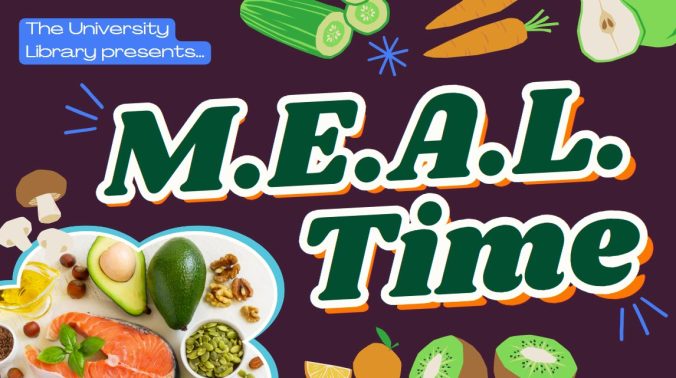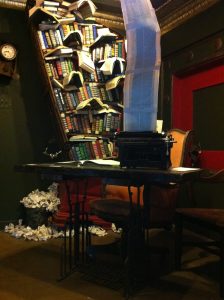M.E.A.L. Time is a food literacy program where participants Meet, Eat, and Learn at the University Library. The users of an academic library are primarily staff, faculty, and students. Those students vary in age from toddlers to senior citizens, come from different countries, and have a wide range of life experiences. What I have learned from working with students here and in Asia is that food is an icebreaker and a gateway to making connections. There’s the lighthearted side of food…What’s your favorite place for X? Have you tried Y? What’s your opinion on candy corn? (I’m ambivalent on that, by the way.) But, there is also a dark side. What do you do when you’re in school and don’t have enough money for rent and food? What if you’re in the dorms and need to supplement your meal plan because the value of swipes is not enough for full meals? What if you were forced to ignore nutritional content because of hunger? I was food insecure in college. Decades later, I am hearing the same struggles from my students in REPAIR Lab.
I envision that implementing Meet, Eat, and Learn (M.E.A.L. ) Time at the University Library will create a space for people to connect over food and answer questions about cooking basics, meal prep, recipes for busy people, and nutrition. The University Library is uniquely positioned to build strong partnerships because we have a college for agriculture, a college for hospitality, a strong care network, connection to on-campus daycare and high school, dorm networks, student groups, cultural centers, and an active development team. Student success in life and academics are our north star. Food plays a vital part in keeping everyone on track for success. To that, please see my innovation strategy and roadmap for M.E.A.L. Time, a meet, eat, and learn at the University Library food experience.


Hey Ping,
I really enjoyed reading your inspiration report! From someone who doesn’t know how to cook, I found a lot of your research was informal and can benefit a lot of libraries on the story of food, the culture, where it originated, nutrients, etc. Awesome stuff!
Hi Tyrone,
I was really excited about all the food type programs going on in libraries, but for the presentation I tried to keep the slide information as informal as I could. I saw it as more of a pitch deck. I wanted to make sure that people understood that this type of program was possible to make happen and it has been successfully done elsewhere. If I started inserting formal journal articles in there, then it would lose some of its accessibility to a broad audience. Thanks for taking the time to view it!
Best, Ping
Hi Ping,
This was such a great presentation! I really loved your topic of choice — doubly so, with the community demographic you chose to target the MEAL program to. I feel like college/university is a prime time where many people, who may now be fending for themselves for the first time in their lives, are struggling and would benefit immensely from what such a program could teach them. Similarly, I think there can be such a stigma in getting help — especially when you’re sort of pressured and expected to ‘have it all together’ and be independent as soon as you’re in college. By adding the social and learning aspect to the MEAL program, I think a lot more people may be incentivized to go and may not be embarrassed of the food insecurity that they’re facing because the event doesn’t particularly spotlight that in any kind of negative way.
Thanks, Ramasha! I like to think if M.E.A.L. Time ever happens in reality, it would be flexible to meet the interests of all campus demographic groups. I think students will always be primary. For example, what if it we could collaborate with the viticulture teacher and do a flipped classroom situation where students talk to about growing grapes and winemaking? I really think if the space exists and a Charlie Cart could be purchased, the program possibilities would be endless on an academic campus.
Hi Ping!
I really liked this idea, and I think it sort of ties in with what we learned in the “power of stories” module about the benefits of human libraries. Both scenarios are putting people who wouldn’t normally communicate together, and opening up a dialogue!
Great job!